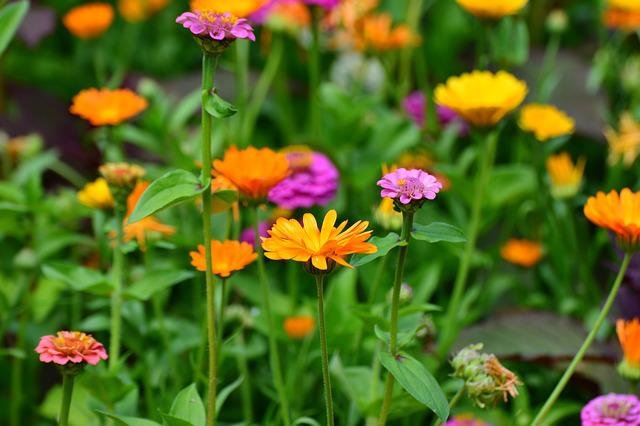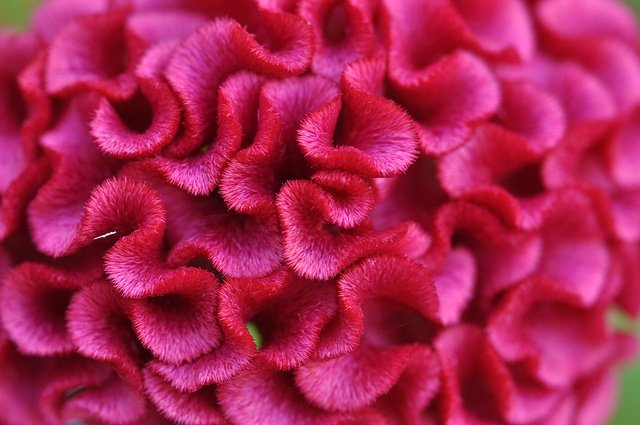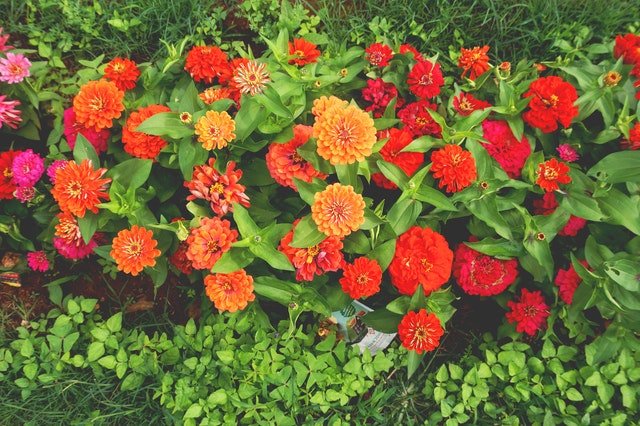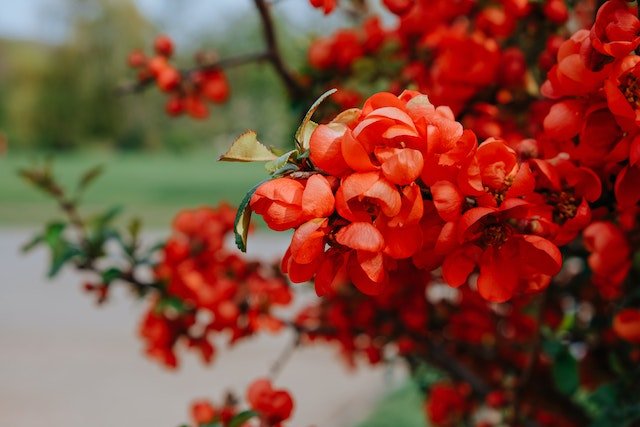A delphinium flower is a sight to behold. With its tall spire and delicate petals, it’s no wonder this flower is a favorite of gardeners everywhere. But what happens if you can’t get your hands on a delphinium? Don’t worry, there are plenty of flowers that look like delphinium!
So, what exactly are delphiniums? Delphiniums are a member of the buttercup family and are native to Europe and Asia. They are most commonly found in shades of blue, but can also be white, pink, or purple. These flowers get their name from the Greek word for dolphin, as their flower shape is similar to that of the ocean mammal.
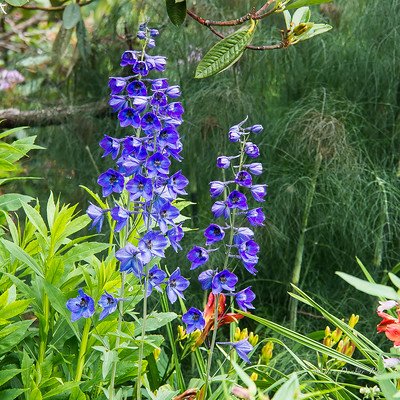
Table of Contents
Delphiniums Care.
Delphiniums are relatively easy to care for, but there are a few things you should keep in mind.
First, they prefer full sun and well-drained soil.
If you live in an area with hot summers, it’s best to plant your delphiniums in a shady spot. The leaves of delphiniums are what sets them apart from other plants – they are long and thin, with a deep green color. This makes them well-suited for full sun conditions, as they can take advantage of the sunlight to produce more energy.
In addition, delphiniums have shallow roots that dry out quickly, so well-drained soil is essential to prevent the roots from rotting. Overall, delphiniums are hardy plants that can tolerate a wide range of conditions, but they will always perform best when given full sun and well-drained soil.
Secondly, delphiniums are heavy feeders and will need to be fertilized regularly.
Most people are familiar with the classic blue delphinium, but these flowers come in a wide range of colors, including pink, white, and purple.
Delphiniums are known for their tall spikes of blooms, which make them a popular choice for cut flowers. However, what many people don’t realize is that delphiniums are heavy feeders and will need to be fertilized regularly to keep them looking their best.
The reason for this is that delphiniums are native to mountain regions, where the soil is thin and poorly supplied with nutrients. To compensate for this, delphiniums have evolved to be very efficient at taking up nutrients from the soil.
As a result, they need to be fertilized more frequently than other plants. While it may seem like a lot of work, regular fertilization will pay off in the form of healthier plants with more abundant blooms.
Lastly, Delphiniums are not immune to pests.
Delphiniums are susceptible to powdery mildew, a fungal disease that can cause the leaves to turn brown and the flowers to drop prematurely. To prevent powdery mildew from taking hold, it is important to water delphiniums at the base of the plant rather than from above. This allows the foliage to dry quickly, which inhibits the growth of fungi.
In addition, any leaves that show signs of powdery mildew should be removed immediately and destroyed. By taking these simple precautionary measures, you can keep your delphiniums healthy and ensure that they will continue to bring beauty to your garden for years to come.
There are many reasons to love delphiniums.
For one, they are excellent cut flowers and can brighten up any room in your home.
They also make beautiful additions to flower beds and borders.
In addition, delphiniums are relatively easy to care for and are tolerant of a wide range of conditions.
However, one of the best things about delphiniums is that they come in a wide variety of colors, so you can find the perfect shade to match your garden.
Flowers that look like delphinium.
If you’re looking for a flower that looks like delphinium, here are some of the best options:
1. Larkspur.

Larkspur and delphiniums are both tall, showy flowers that make a dramatic statement in the garden. Both have similar stalks with blue or violet blossoms, and both flower in mid-to-late summer. But there are some key differences between these two plants. Larkspur blooms are longer and more tapered than those of delphinium, and the flowers grow in clusters rather than on spikes.
Larkspur leaves are also narrower than those of delphinium, and they are arranged in opposed pairs along the stem (delphinium leaves are alternate). Despite these differences, larkspur is often mistaken for delphinium, and vice versa. So if you’re unsure which plant you’re looking at, just enjoy the beauty of both!
2. Foxglove.

Foxglove and delphiniums are both beautiful flowers that have similar appearances. Both have long stems with blue or purple flowers that appear in clusters. However, there are also some important differences between these two types of flowers.
For example, foxgloves tend to be taller than delphiniums, and their flowers are typically more trumpet-shaped. Additionally, foxgloves usually have spotted leaves, while delphiniums typically do not. Despite these differences, foxgloves and delphiniums are both stunning flowers that make a lovely addition to any garden.
3. Salvia sagittata.
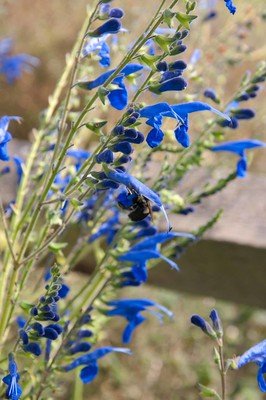
Salvia sagittata is a flower in our next list of flowers that look like delphiniums. Both flowers have long stems with sparse leaves, and the blooms are clustered at the top of the plant. However, there are some key differences between the two flowers. Salvia sagittata blooms are typically blue or purple, while delphiniums can come in a variety of colors.
Additionally, Salvia sagittata blooms have five petals, while delphiniums have six or seven. Finally, Salvia sagittata plants typically grow to be about two feet tall, while delphiniums can grow up to six feet tall. Despite these differences, the similarity in appearance between Salvia sagittata and delphiniums makes them often mistaken for one another.
4. Salvia ‘Amistad’
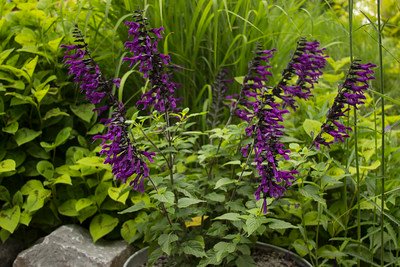
Salvia ‘Amistad’ is a flower that looks like delphiniums. They have similarities in terms of the shape of flowers, growth habits, or flower color. Delphiniums are mostly perennial plants with tall erect flower spikes and deeply lobed leaves. They are native to temperate regions of the Northern Hemisphere, especially mountainous areas. Salvia ‘Amistad’, on the other hand, is an annual or short-lived perennial plant with tall flower spikes and deeply lobed leaves.
It is native to Mexico and Central America. Both types of plants have showy blue or violet flowers; however, Salvia ‘Amistad’ flowers have white spotting on them. The growth habit of both plants is similar, as they both grow upright and can reach a height of 2-3 feet. Thus, flower lookalikes can be easily distinguished by their flower color and growth habit.
5. Betonica Officinalis
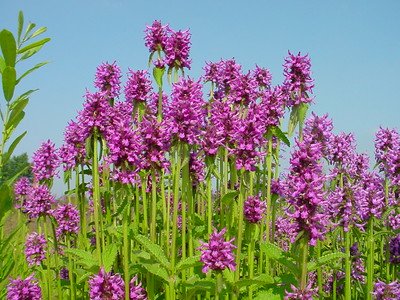
Betonica officinalis, commonly known as wood betony, is a flower that looks like delphinium. Both plants have tall spikes of blue flowers, and both are often used in cut flower arrangements. However, there are some key differences between the two plants. Betonica officinalis is a member of the mint family, while delphinium is a member of the buttercup family.
Additionally, betony prefers shady areas and well-drained soil, while delphinium thrives in full sun and rich soil. Finally, betony flowers have five petals, while delphinium flowers have four. Despite these differences, betony and delphinium share a similar flower shape and growth habit, making them a perfect match for any garden.
6. Buddleja Pink Chip

Buddleja Pink Chip is a flower that looks like delphiniums. The similarity in terms of the shape of flowers, growth habits, or flower color makes it look like delphiniums. Pink Chip has long and thin flower spikes, which are densely packed with small pink flowers. The basal leaves are toothed and lance-shaped, while the stem leaves are smaller and ovate.
The plant has a compact growth habit and can reach up to 2 feet tall. As for flower color, Pink Chip blooms in shades of pink, from pale pink to deep rose pink. All in all, these similarities make Buddleja Pink Chip a great delphinium look alike.
7. Liatris spicata

Liatris spicata, commonly known as Blazing Star or Gayfeather, is a flower that looks like delphinium. It is native to North America and grows in prairies, open woodlands, and meadows. Liatris spicata typically blooms in summer or fall. The flower heads are borne on stalk-like scapes that grow 2-4 feet tall. Each flower head is about 1 inch long and consists of many purple or lavender florets.
The flower heads of Liatris spicata resemble those of delphiniums, but the two plants are not related. Liatris spicata is a member of the aster family (Asteraceae), while delphiniums belong to the buttercup family (Ranunculaceae). Despite their different families, both Liatris spicata and delphiniums have showy flower heads that make them popular as cut flowers.
All in all, there are several flowers that look like delphiniums. These plants share a similar flower shape and growth habit, making them perfect for any garden. If you’re looking for a flower that resembles delphiniums, be sure to check out Salvia ‘Amistad’, Betonica officinalis, Buddleja Pink Chip, or Liatris spicata.

Gardening is my passion and growing plants indoors has always been a stress relief for me. Grow a banana tree in my apartment once (although failed to produce bananas).


